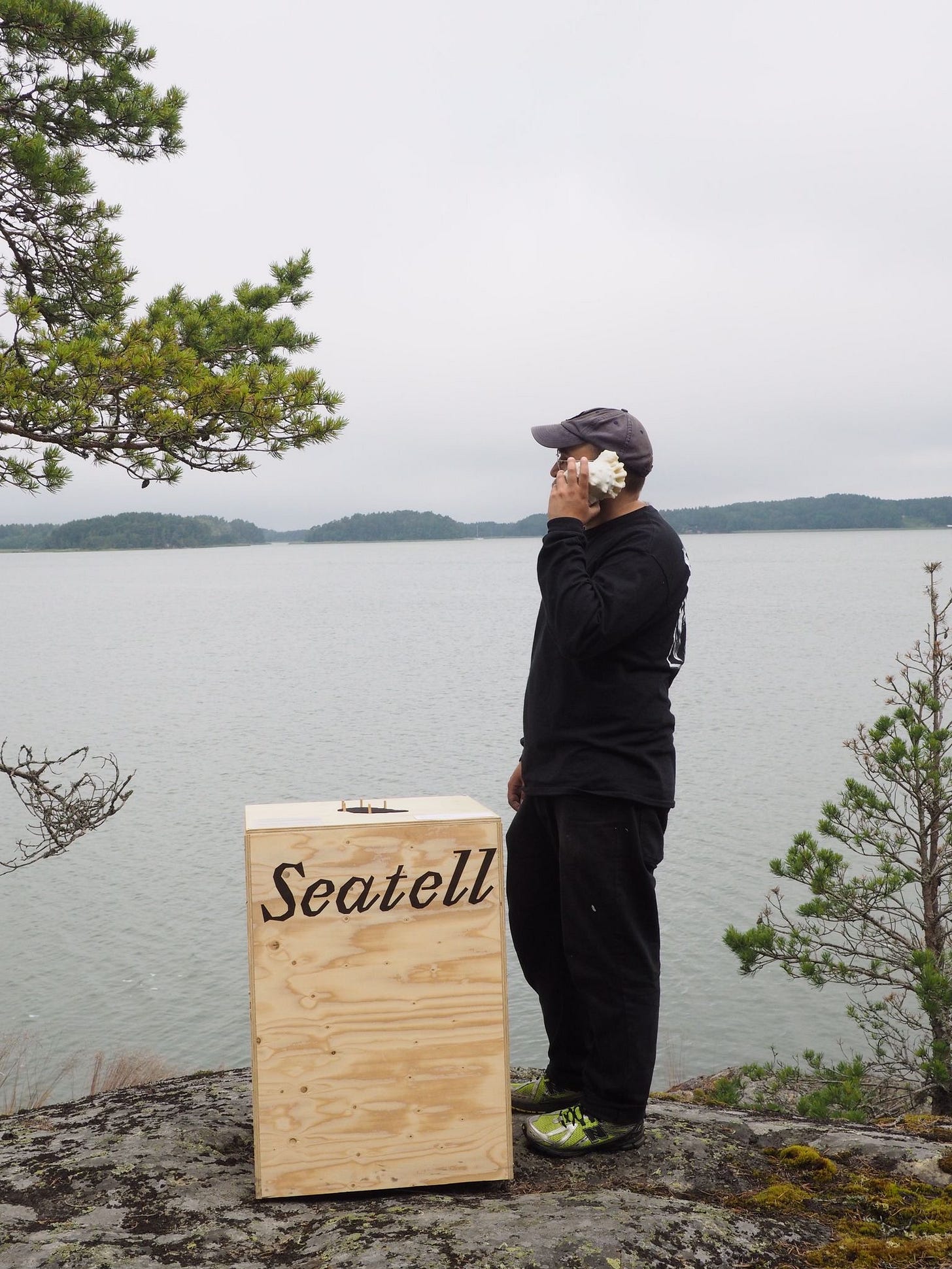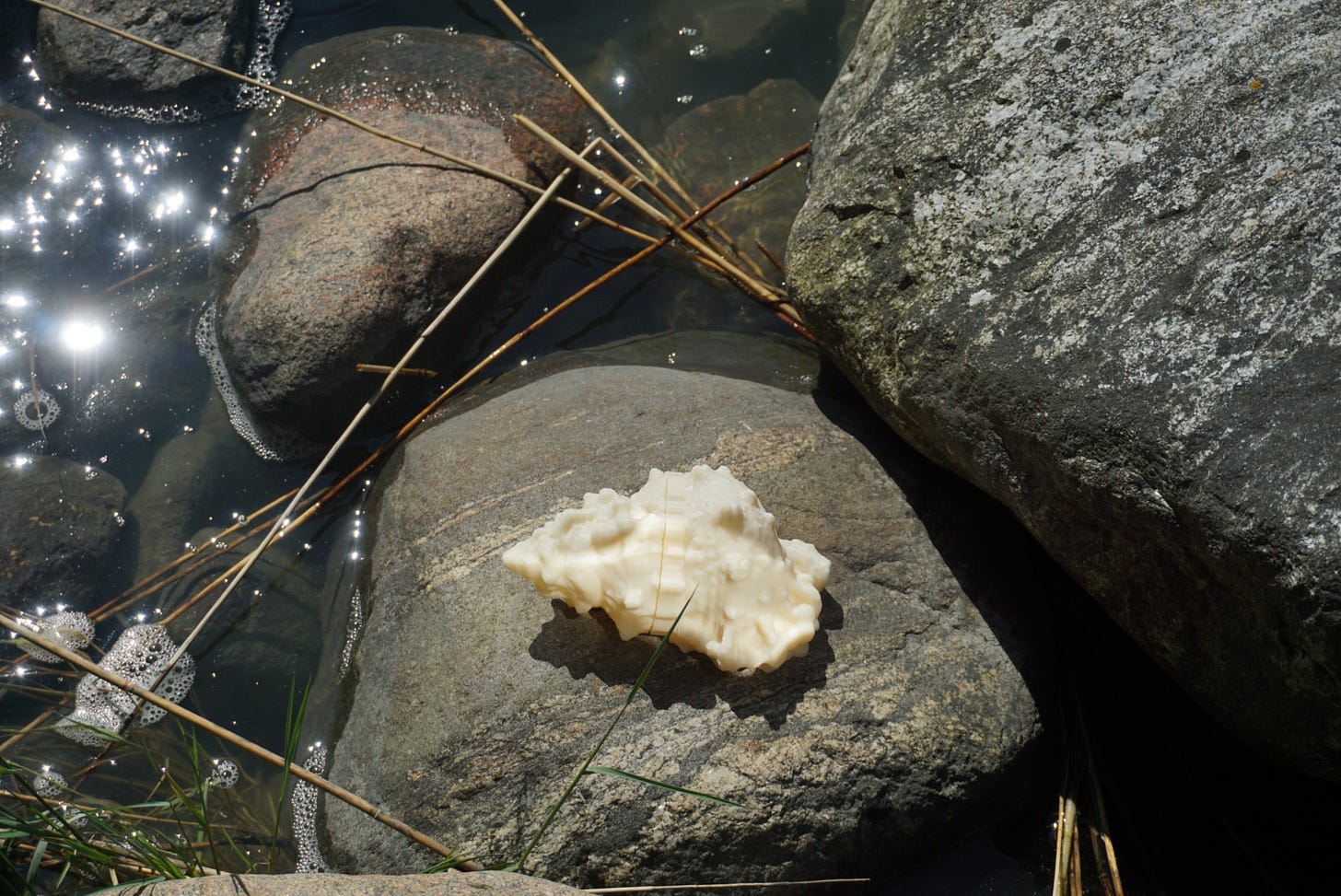Exploring the idea of shared vocabulary between nature and humans
AI translates the state of Baltic Sea into human language through a familiar user interface
Hold a seashell to your ear. Now imagine hearing more than the echo of the sea—short, intimate messages, generated by AI based on live environmental data. Not warnings, but poetic whispers that feel oddly human, even though they are completely artificial.
”I am the Baltic Sea.
I bloom when I am full — not with life, but with excess.
The green clouds you see are signals: of too much, too fast, too long.
But they can fade. And they will, when your choices flow with care.
You are part of this shore, and you matter to me.”
That's the core idea behind SEATELL—an installation that explores whether AI can help us find a shared vocabulary with nature. It doesn't claim to give the sea a literal voice. Instead, it plays with the question: What if we could understand what the environment is saying—and could a shared language give us more agency to act and protect it?
The interface is intentionally simple and even nostalgic. One listener at a time, one message at a time. It hijacks the familiar ritual from childhood and instead of creating something that can be heard by many, it creates a personal space. The interaction is more about wonder than utility. Rather than making bold claims, SEATELL invites quiet reflection. It's a prototype of a thought—not a product.
Pondering becomes more impactful when it feels tangible. That's why we wanted to make the idea as real as possible. The result is part design experiment, part poetic machine. It's not activism in the traditional sense, but it carries an environmental message in its own quiet way.
Made together with Keep the Archipelago Tidy Association, Turku University of Applied Sciences, and Forum Marinum, SEATELL uses fragments of real Baltic Sea data, letting the machine create the story around it. In this case, AI becomes both a translator and a co-author under our creative direction.
We're also honest about the contradictions: using energy-hungry technology to reflect on ecological fragility isn't clean or easy. Can the cause justify the means? This has been a topic we've been discussing a lot. And to be frank, we haven't decided either. In a way, these questions have been a crucial part of the project.
The visual identity follows the idea of organic meeting artificial. A seashell becomes a pixel—the juxtaposition between nature and code, real and artificial.
SEATELL was first presented in the Turku archipelago during Ruisrock Festival 2025. The festival provided fertile ground to test the idea and gave us a lot of learnings. The familiar interface was picked up easily and the small visual clues such as the speaker-like cloth provided enough instructions for people to start listening. People were also surprisingly protective about the messages they heard. They felt like secrets that weren't meant to be shared. Besides joy and wonder, the installation led to fruitful conversations about humans and nature living side by side.
The installation isn't site-specific or time-limited. The concept is meant to travel and will be featured next in Forum Marinum, a maritime centre in Turku.
Team: Antti Partanen, Akseli Kouvo, Kuisma Väänänen, Oskari Pelli, Juho Norokytö





Vaikka olenkin monia (laiskoja) tekoälyn käyttötapoja vastaan, tässä on saatu jotain luovaa lisäarvoa. Kiinnostavaa!